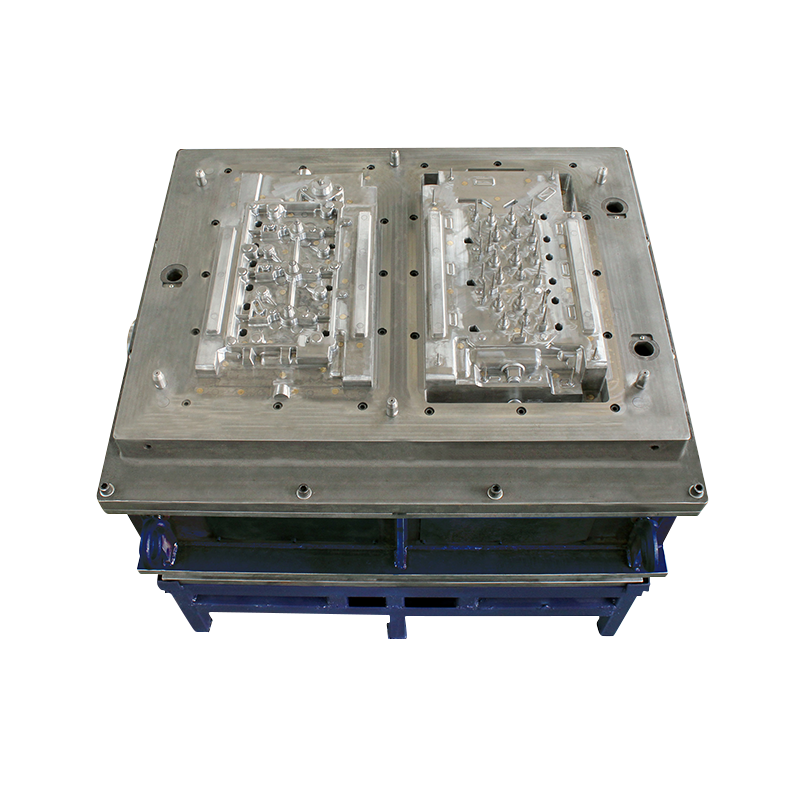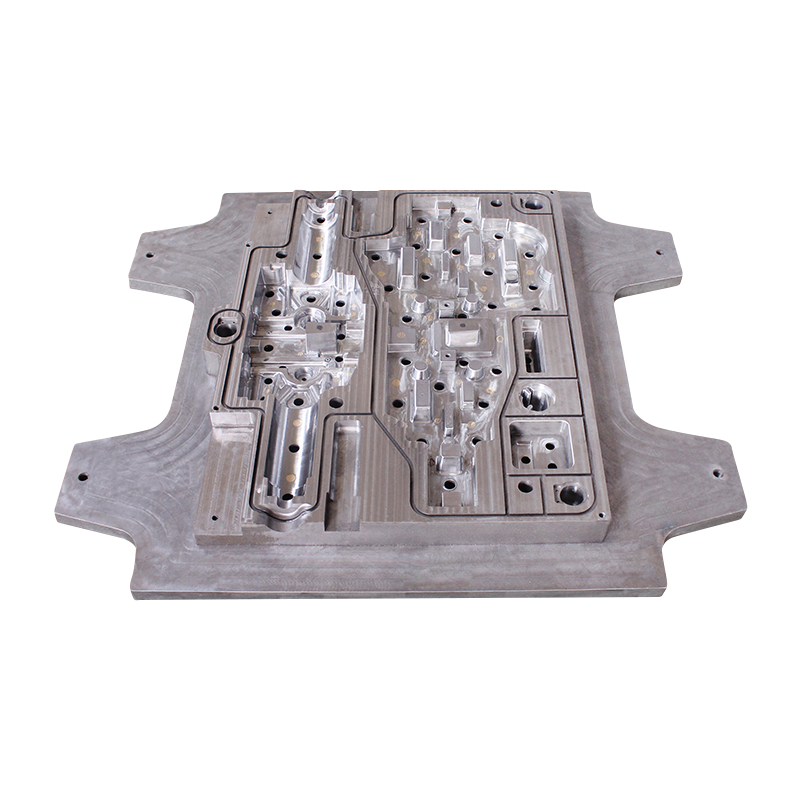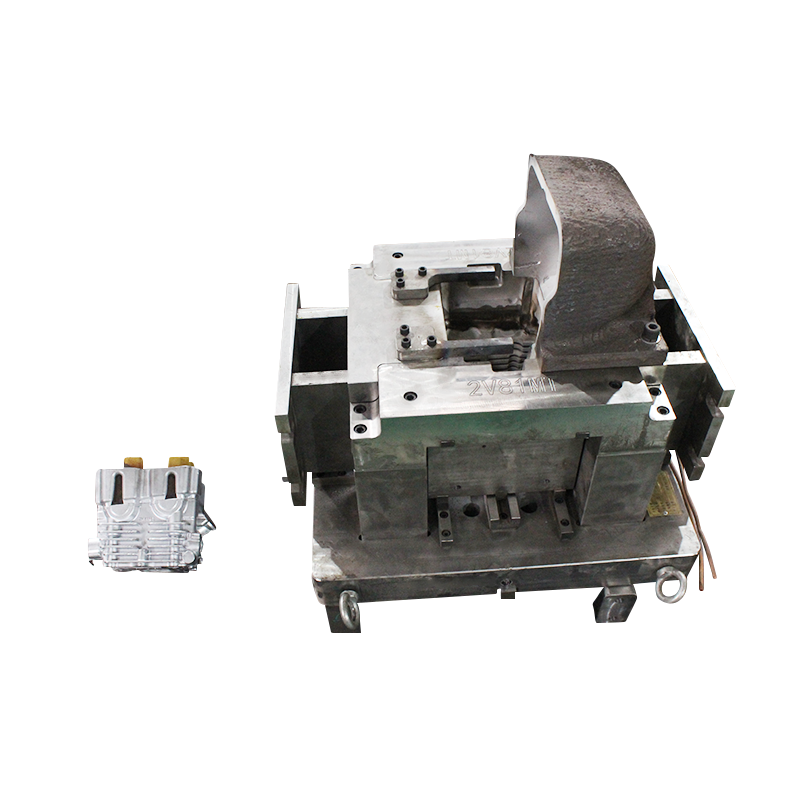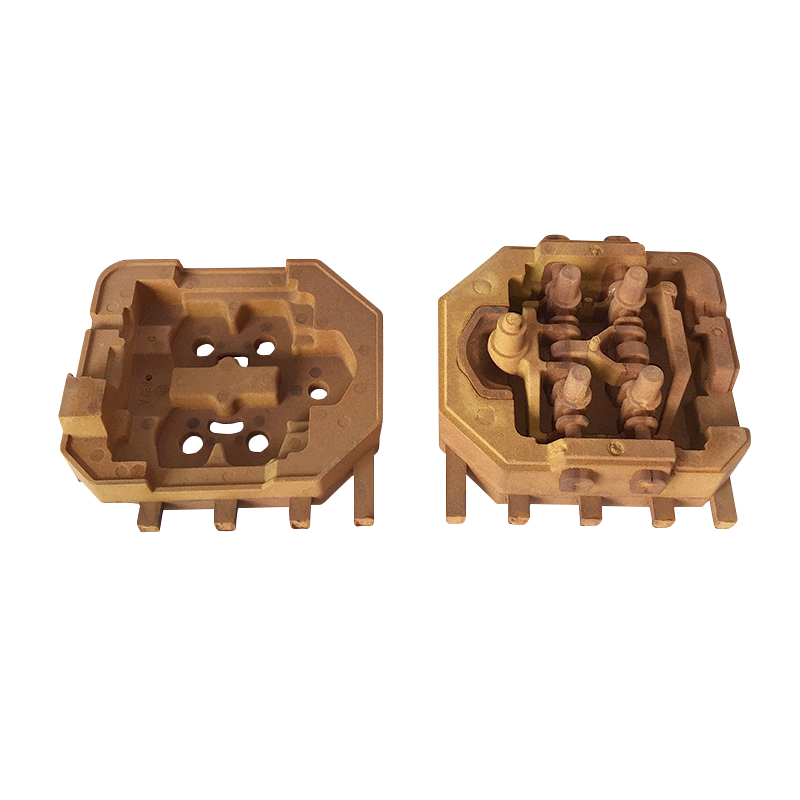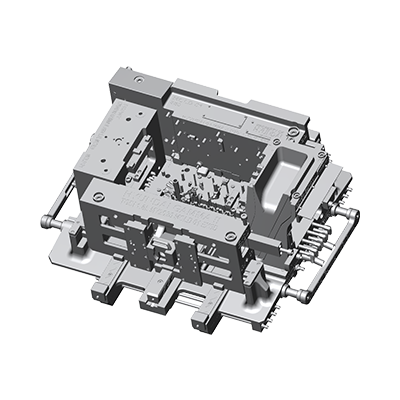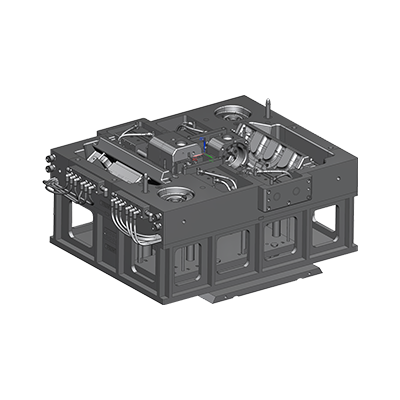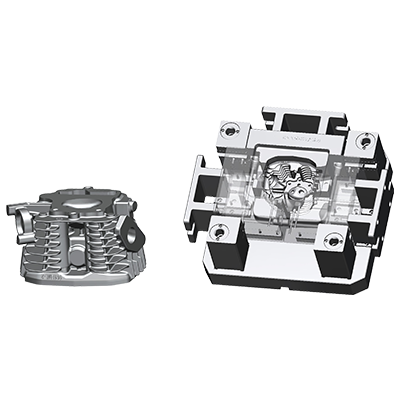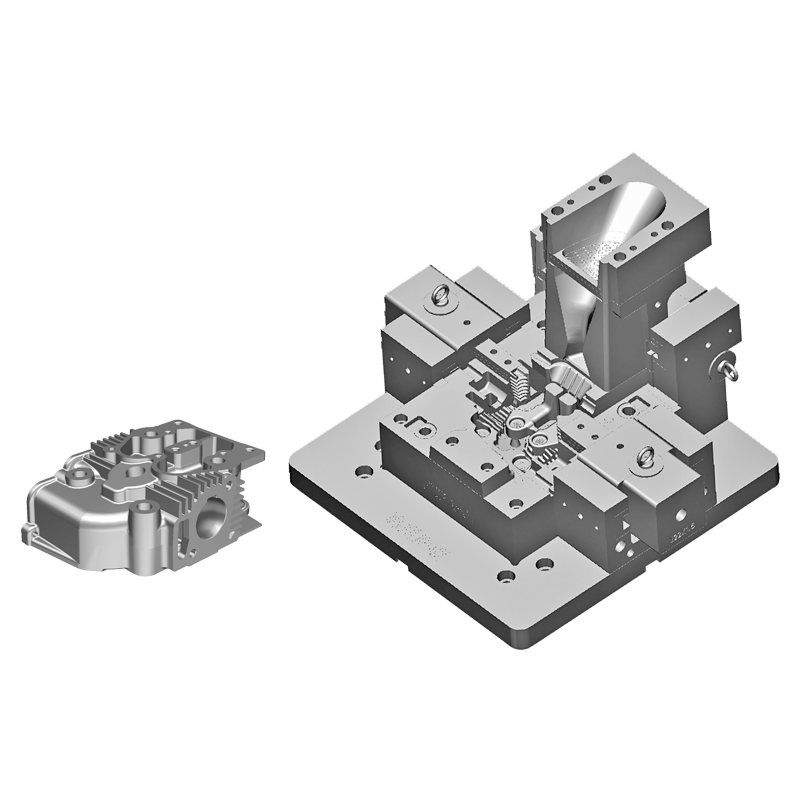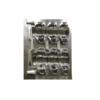The cooling system of the upper mold of the automotive die-casting mold is a key design element, which has a direct impact on the working temperature of the mold and the quality of the parts.
Cooling channel layout:
The cooling system of the upper mold usually includes a series of built-in cooling channels that run through the entire upper mold structure. The layout of the cooling channels needs to take into account the geometry of the mold cavity to ensure that the cooling medium evenly covers the entire mold cavity surface. Reasonable layout helps maintain a stable temperature of the entire upper mold structure.
Diameter and location of cooling channels:
The diameter and location of the cooling channels are designed based on the specific requirements of the mold cavity and metal flow needs. The choice of channel diameter directly affects the flow rate and cooling effect of the cooling medium. Channels need to be positioned to avoid unnecessary interference with the mold cavity structure and to ensure coverage of critical areas requiring cooling.
Cooling medium selection:
Common cooling media include water, oil and other specialized coolants. The choice of cooling medium depends on the working temperature and material of the mold, as well as the requirements for the surface quality of the part. Water is usually a cost-effective option, but may not be stable enough in high-temperature environments, in which case a dedicated high-temperature coolant may need to be considered.
Cooling system control:
The cooling system of the upper mold usually needs to be integrated with the control system of the entire die casting machine. By adjusting the flow, temperature and pressure of the cooling system, precise control of the mold temperature can be achieved. This plays an important role in ensuring part consistency and avoiding thermal stress.
Surface cooling:
In areas where special structures may exist on the surface of the mold cavity, special attention needs to be paid to the design of surface cooling. These areas may include part surfaces that require high surface quality, and finer temperature control in these areas can be achieved by increasing cooling channel density or using localized cooling.
Simulation and analysis of cooling effects:
During the design phase, it is common practice to use advanced simulation tools to simulate and analyze cooling effects. Such simulations can help designers optimize the layout and design of cooling channels to ensure maximum cooling effects.
Anti-freeze and anti-corrosion treatment:
Considering that the cooling system may face low temperature environments, antifreeze treatment is required to prevent the coolant from freezing at low temperatures and damaging the system. At the same time, the corrosion resistance of the coolant is also a consideration to protect the internal materials of the mold from corrosion.


 Pусский
Pусский Español
Español